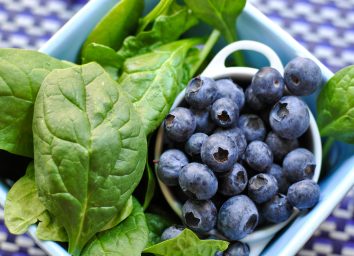Secret Tricks for Eating Your Way to a Better Immune System, Dietitian Says
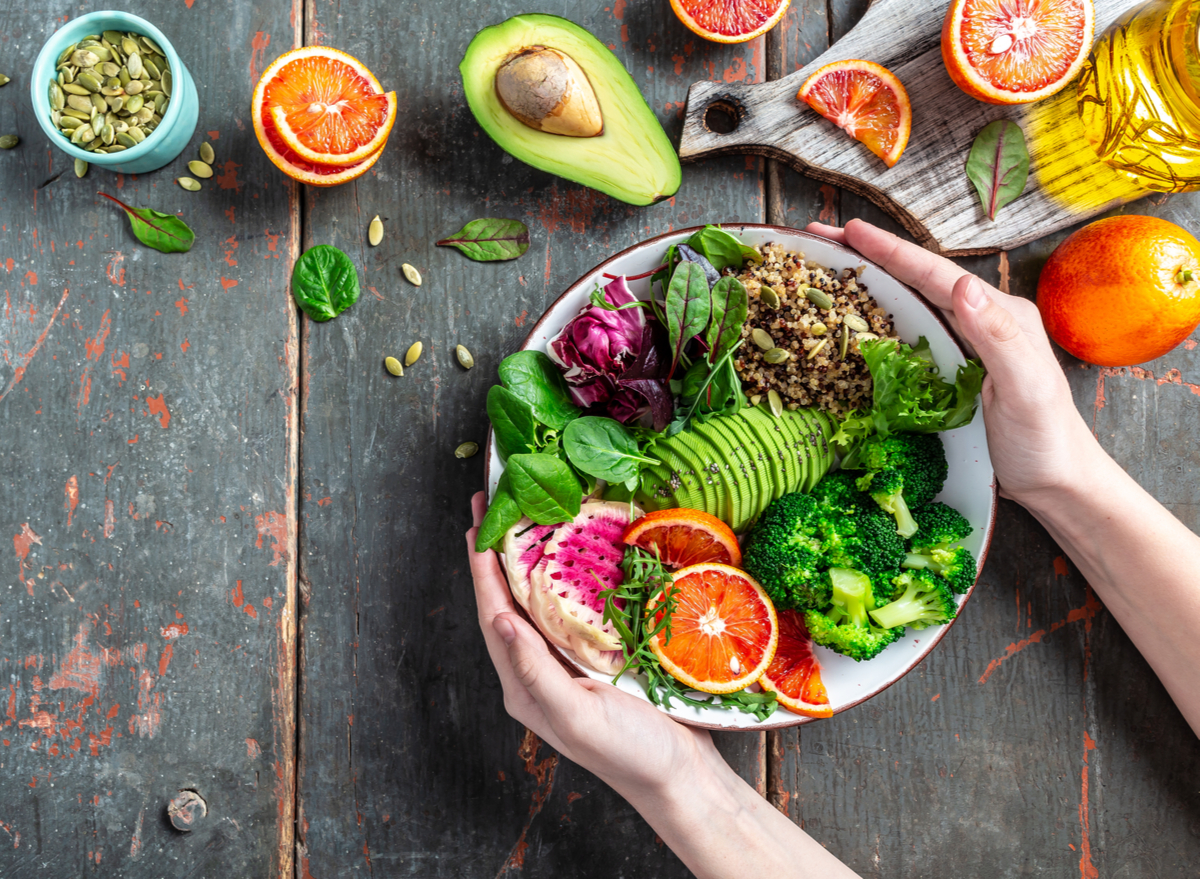
Immunity is defined as a condition of being able to resist a particular disease or infection by preventing the development of pathogens through specific antibodies or sensitized white blood cells. The immune system is an intricate interplay of cells, tissues, and organs that have the crucial job of determining if foreign invaders and signals are dangerous or not to our bodies. Immunity is a two-part system in the human body: innate and adaptive. Innate immunity includes skin, mucus, stomach acid, and enzymes that block, trap, or destroy pathogens. Adaptive immunity is the part of our physiology that learns to recognize pathogens and is regulated by cells, bone marrow, and lymph nodes.
It is suspected that many of our immune responses are influenced by environment and behavior like diet rather than genetics. In fact, a systems-level analysis in the publication Cell compared twin siblings and found that their immunity differed greatly, and not as a result of an inherited response but instead due to environmental exposure.
One of the best strategies within our control to possibly enhance immunity is via an overall healthy diet. There isn’t strong evidence to support that singling out a particular food or supplement makes the difference, but rather the synergy of all foods eaten on a regular basis. The closest eating pattern we believe could help immunity is an anti-inflammatory diet, which includes some of these tricks.
Pack your diet full of colorful fruits.
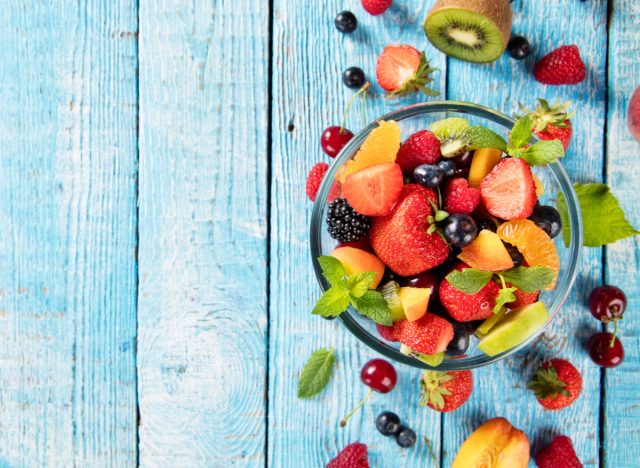
We are always going to be fans of eating produce, and a consuming rainbow of fruits is ideal. It’s great to consume fruit regularly, but if bananas and apples are on repeat in your grocery cart each week, it’s time to branch out. Think reds like cranberries or pomegranates, greens like kiwi or honeydew, purples like plums or figs, or yellows like pineapples or apricots. These different fruits contain a span of various vitamins, minerals, and phytochemicals to help fight disease and could prepare us best for unwanted bacterium or viruses.
Fresh, canned, dried, or frozen options count. You could cut up a fresh pear to dip in some peanut butter, top your canned peaches with a dollop of light whipped cream for dessert, add some raisins to your morning oatmeal, or throw some frozen berries in your next smoothie.
Consume more dark leafy greens and orange or red vegetables.
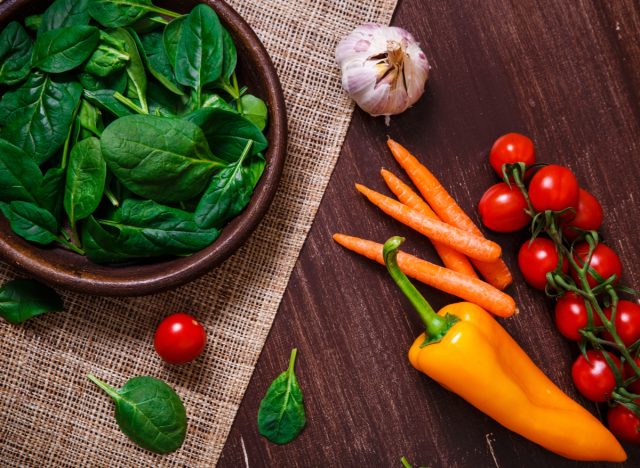
These two subcategories of vegetables are called out specifically in the Dietary Guidelines for Americans 2020-2025. They pack a punch of fiber and compounds like chlorophyll, lycopene, beta-carotene, lutein, and anthocyanidins which can do everything from supporting healthy blood vessels to protecting our vision and, you guessed it, helping our immune system.
Some examples to hit this food goal could be enjoying a spinach salad topped with shredded carrots as a lunch appetizer, leftover pasta salad with arugula and tomatoes as a snack, or cooked bok choy mixed with red bell pepper as a dinner side.
Include prebiotics and probiotics regularly.
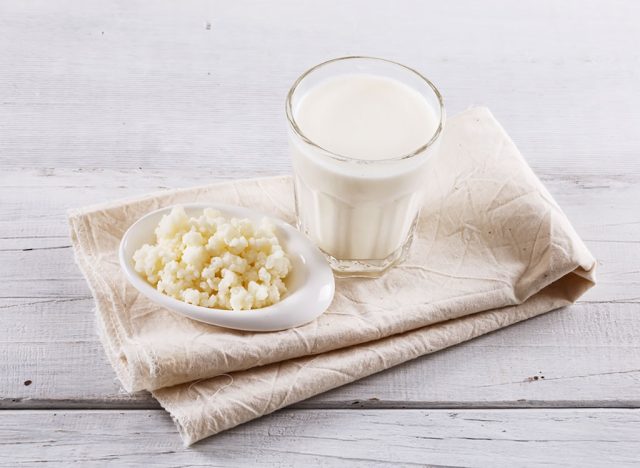
A review in the journal Nutrients points out that prebiotics foster the growth of bacteria associated with health benefits, such as of the Bifidobacterium genus, while reducing potential pathogenic ones like that of the Clostridium genus. This activity could control inflammation and oxidative stress in the face of infection. Top prebiotic foods include garlic, onions, leeks, asparagus, and Jerusalem artichokes. Prebiotics are also found in many other fruits, vegetables, beans, and whole grains.
Probiotics we might hear about more often because they are the actual live microorganisms that confer benefits. Probiotic cultures appear to support the immune system by preventing the growth of harmful bacteria and aiding in their elimination. The most common probiotic foods include dairy or nondairy yogurts and fermented foods like kombucha, kefir, sauerkraut, kimchi, or tempeh.
Eat sensible portions.
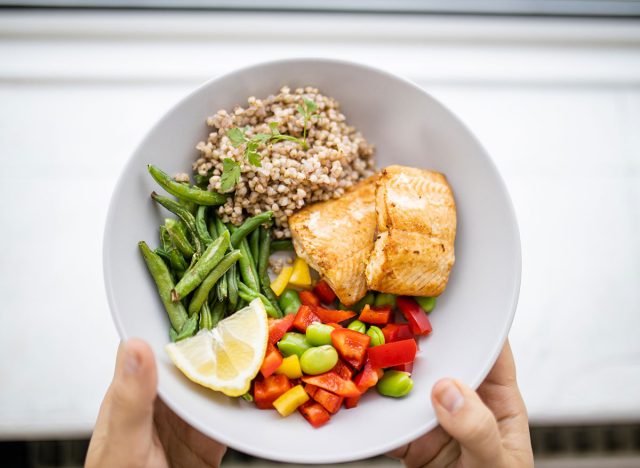
Maintaining or achieving a healthy body weight is paramount in controlling the risk of chronic illness, as obesity is associated with low-grade inflammation. Healthy body weight may also help in acute protection from infection and disease.
A good rule of thumb is to stick to the suggested serving size from the nutrition facts label. Most healthy adults should be striving for around four to five eating occasions a day and meals are likely around a 500-calorie goal and snacks at usually a 250-calorie goal. A note that this can vary greatly based on age, gender, activity level, or clinical conditions, so consult individually with a registered dietitian for further guidance.
Limit the added sugars.

Sugar seems to be everywhere in food and beverage products and can often go unnoticed until you flip over the package and check the ingredients and/or nutrition facts panel. Added sugars in the form of cane sugar, beet sugar, molasses, honey, maple syrups, agave nectar, or other sweeteners provide little to no nutrition and crowd out space for other wholesome foods we could be consuming to help immunity.
Aim first for exchanging sugar-sweetened beverages like specialty coffees and sodas for drinks that are unsweetened like a nice herbal tea or flavored seltzer water. Next, turn to fruit as a source of sweetness rather than relying on sugar-sweetened desserts or treats. We recommend sticking to less than ten percent of your total calories as added sugars.
Incorporate more immune-boosting food into your diet with these Popular Foods That Boost Your Immune System.


